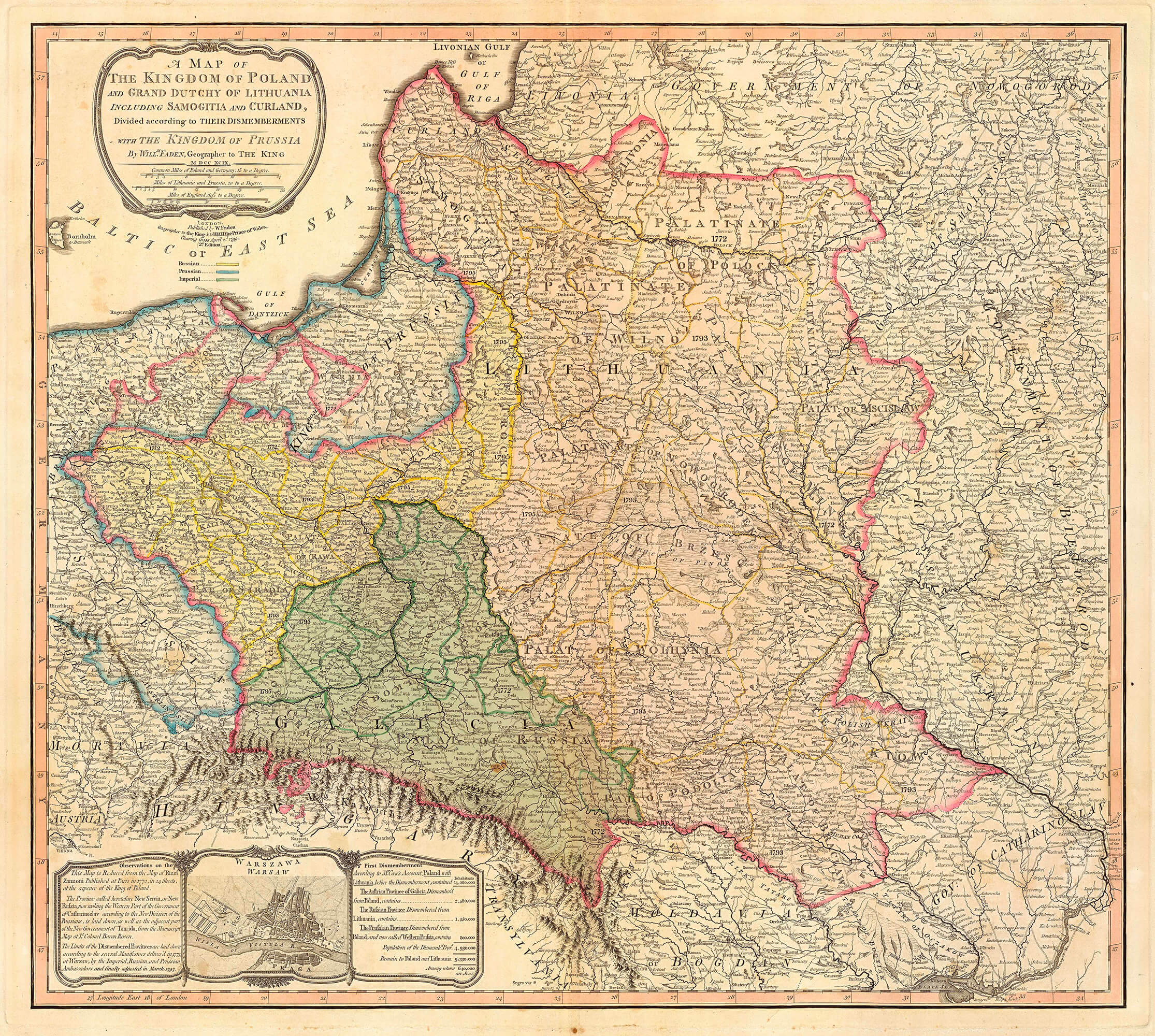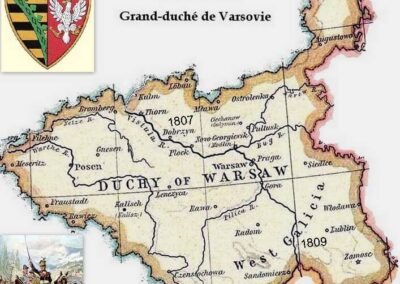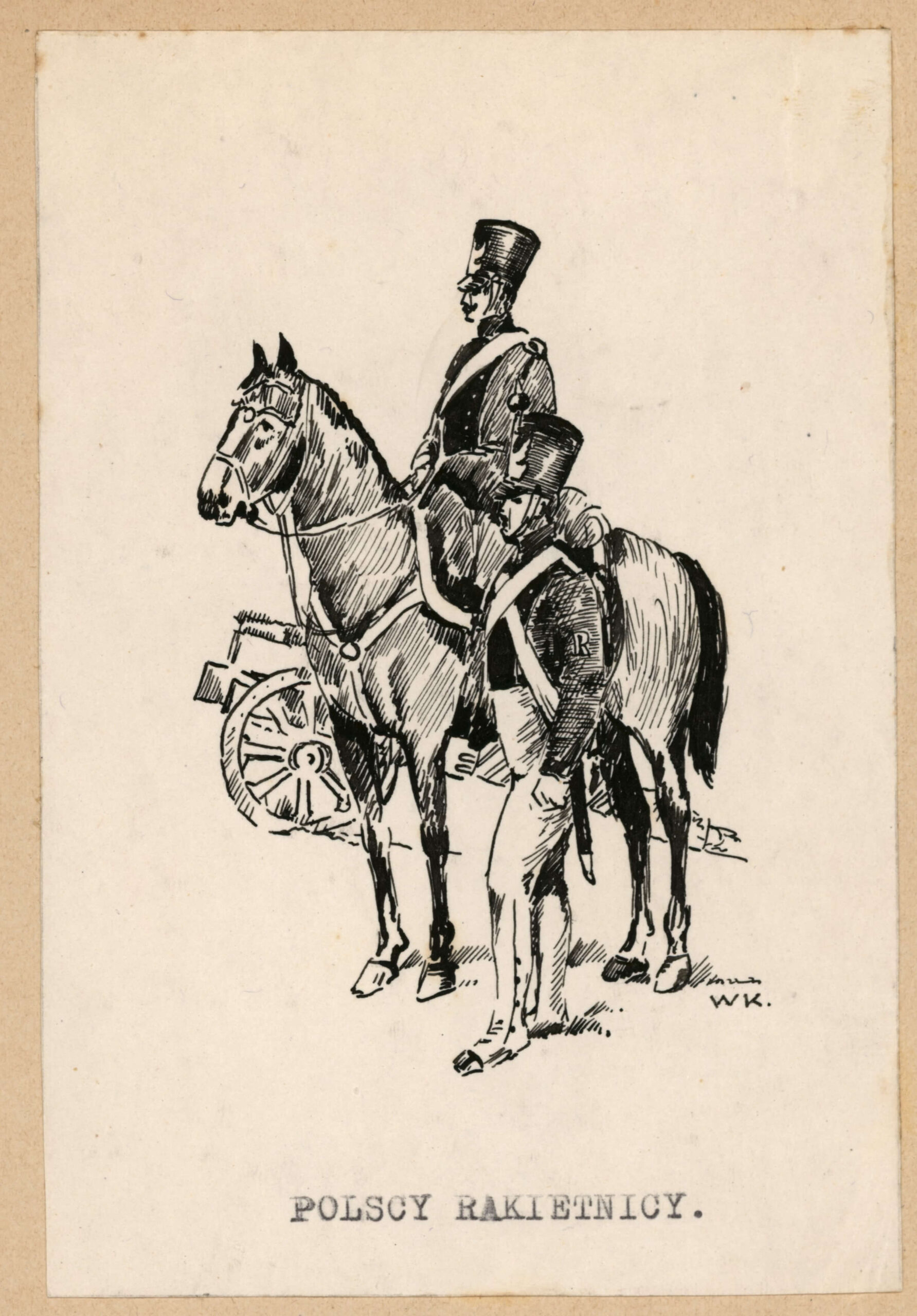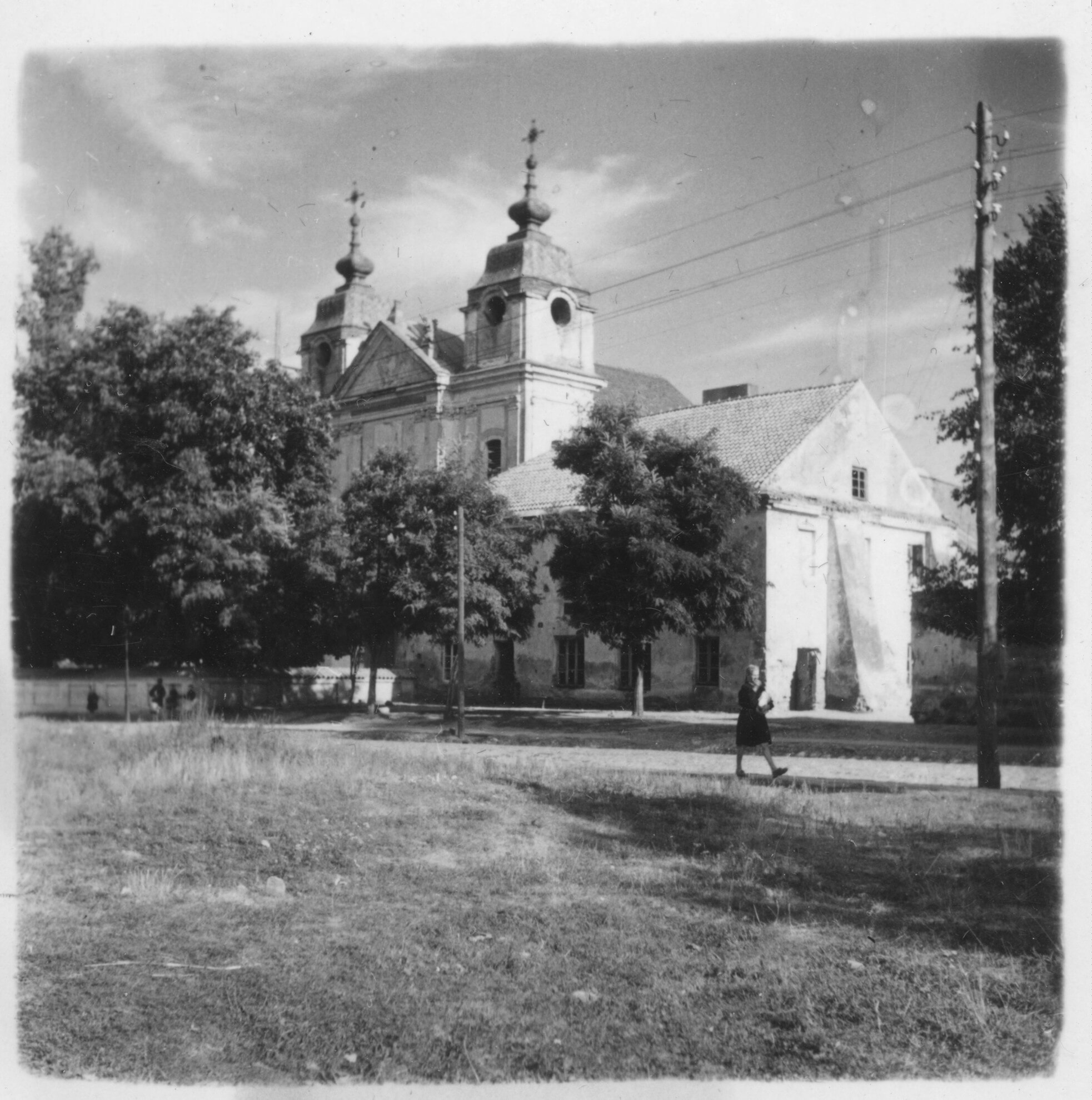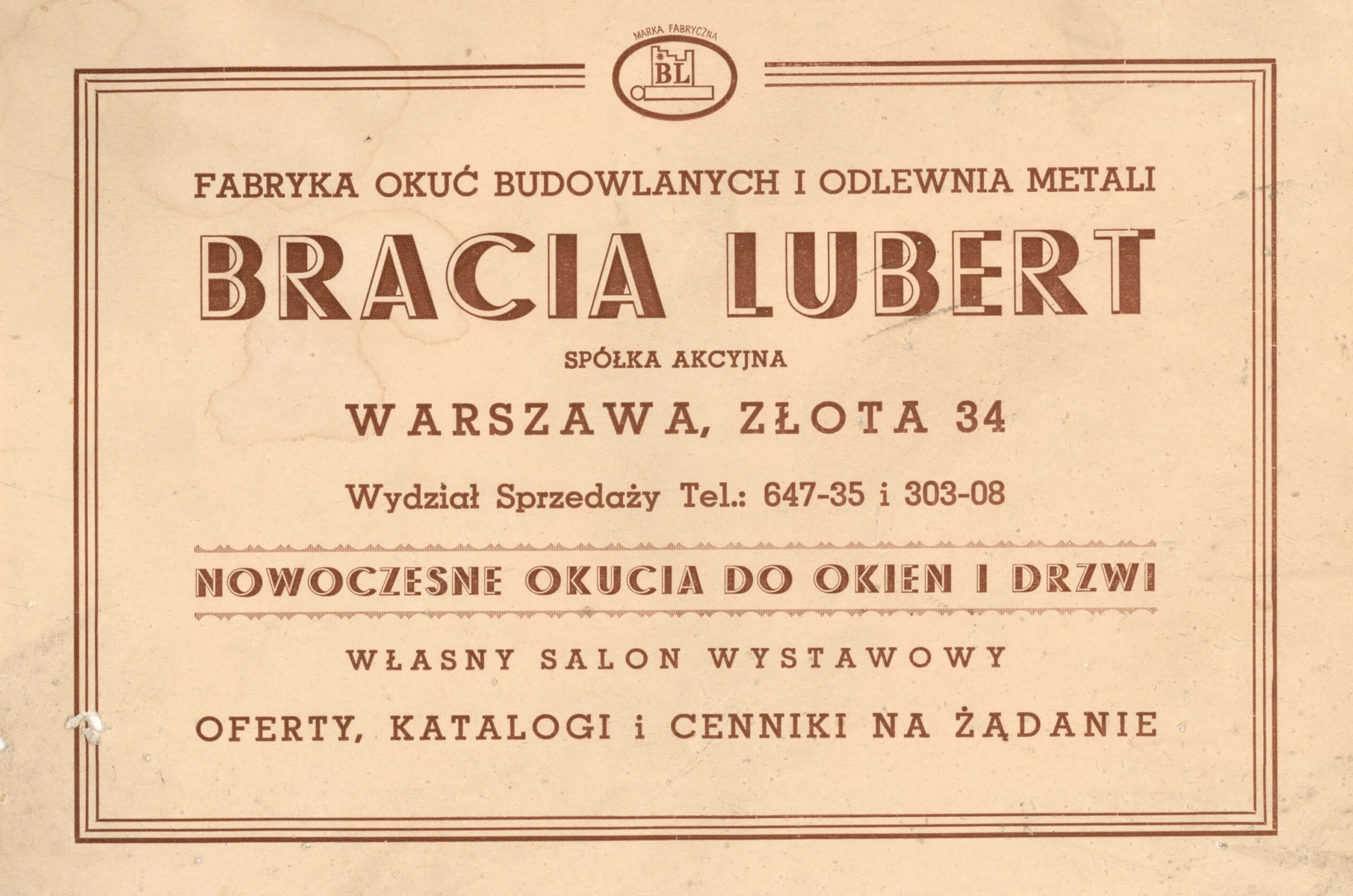x
CHRONOLOGY
PARTITIONED POLAND
1795
Following the Third Partition of Poland, Warka is ruled by Prussia.
1797
November Uprising hero Piotr Wysocki (d. 1875) is born in Winiary near Warka.
1807
Warka becomes part of the Duchy of Warsaw, which concludes the Prussian reign.
1809
The Duchy of Warsaw army fights Austrian armed forces at Warka.
1810
Warka has 1,087 residents.
1815
Warka becomes part of the Kingdom of Poland, also known as Congress Poland, a state linked by personal union to the Russian Empire.
1823 – 1830
Two artillery units called ‘the rocketeers’ (rakietnicy) are stationed in Warka, which positively influences the Town’s economic and demographic development.
1826
Warka has 2,557 residents and 156 houses.
1845
Wincenty Hipolit Gawarecki publishes the “Description of the town of Warka, located on the Pilica River.”
1850
Władysław Matlakowski (d. 1895)–surgeon, ethnographer, writer, and translator of the works of Shakespeare–is born in Warka.
1857
Warka has 2,761 residents and 165 houses.
1857
Piotr Wysocki returns to Warka after his exile in Siberia.
1859
Piotr Wysocki, who has recently returned from Siberia, organizes a ceremonial, solemn transfer of the remains of the Mazovian Princes from the ruined Dominican Church to the Franciscan Church.
1863
January Uprising rebels fight Tsarist troops at Warka; Władysław Kononowicz and his two aides are publicly executed on Warka meadows.
1864
The Franciscan Order in Warka ceases to exist.
1865
Warka has 3,172 residents and 176 houses.
ok. 1891
The first locksmith workshop, later called “Bracia Lubert” Construction Hardware Factory, opens in Warka.
1897
Warka has 4,274 residents and 304 houses. Fr. Marceli Ciemniewski starts to head the parish in Warka.
1898
Zygmunt Ledóchowski (d. 1965)–an eminent chemist–is born in Warka.
1903
A fire consumes 66 houses and 74 farm buildings in Warka; about 220 families are left homeless.
1908
A volunteer fire department takes shape.
ca. 1910
A brass band at the Volunteer Fire Department organizes in town.
1912
Warka has 5,900 residents.
1913
Warka has 6,149 residents.
1914
After the outbreak of World War I, Warka residents form a Citizens’ Committee to provide help for civilians.
1915
A military campaign brings about the conclusion of Russian rule; Warka lies in the German occupation zone.
1915 – 1918
During German occupation, the town is supplied with electricity from a private power station owned by the Kosmahls; German authorities open civil offices, build a bridge over the Pilica River and a road between Warka and Góra Kalwaria (14 miles north of Warka).
1918
On November 11, Warka residents disarm German soldiers.
